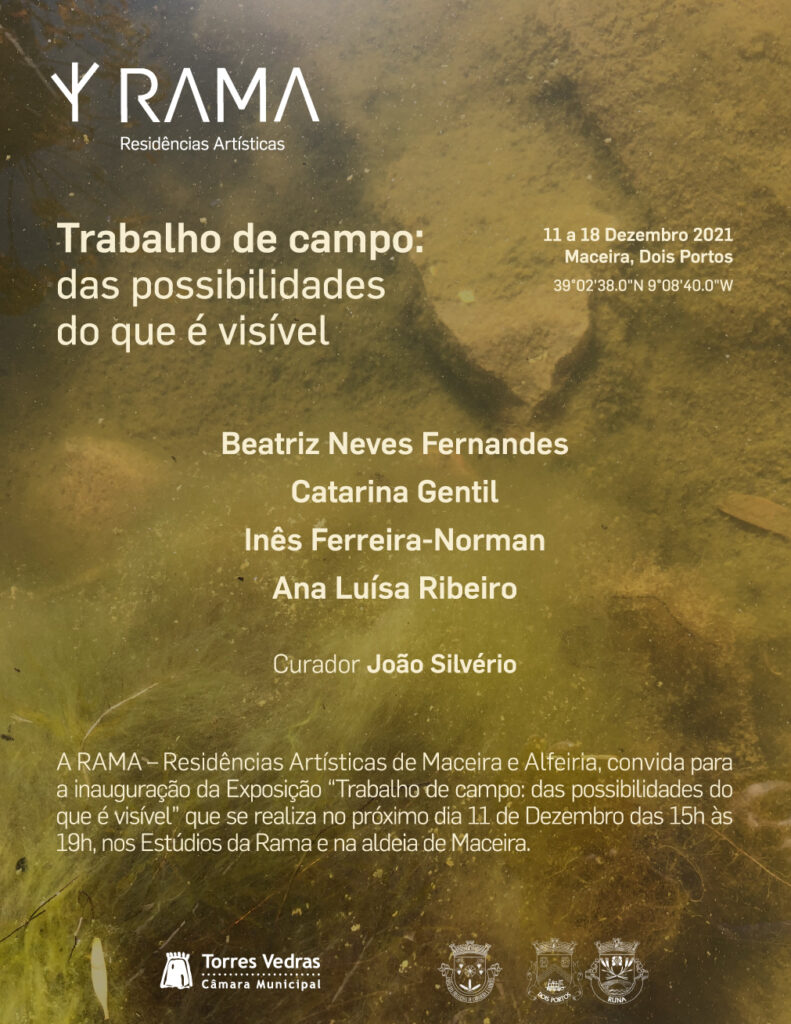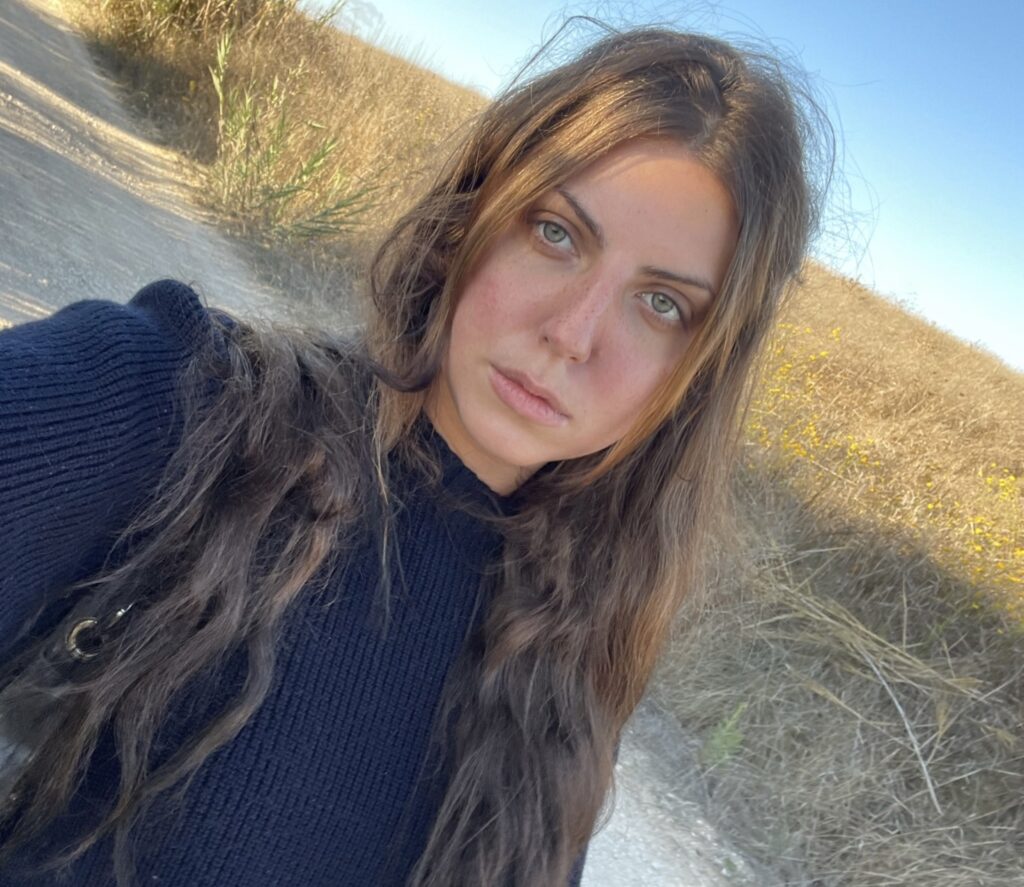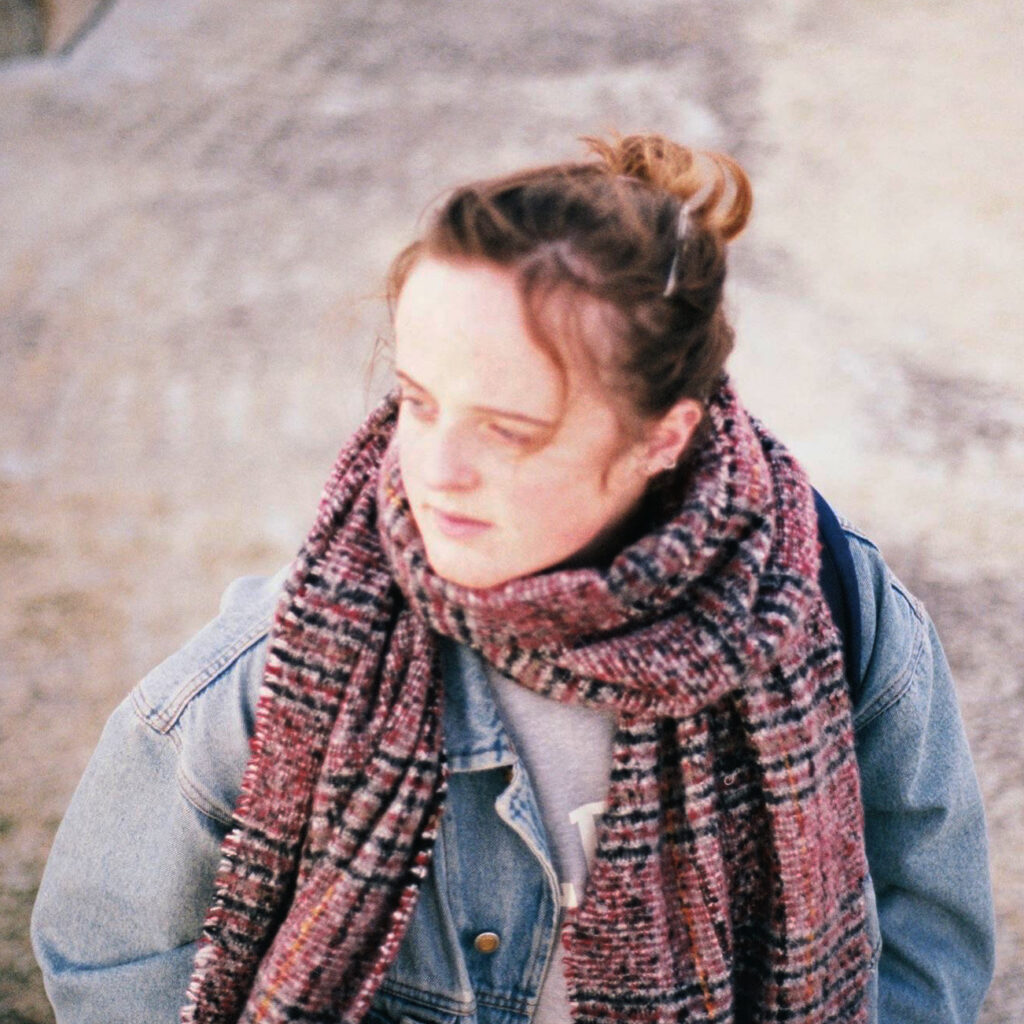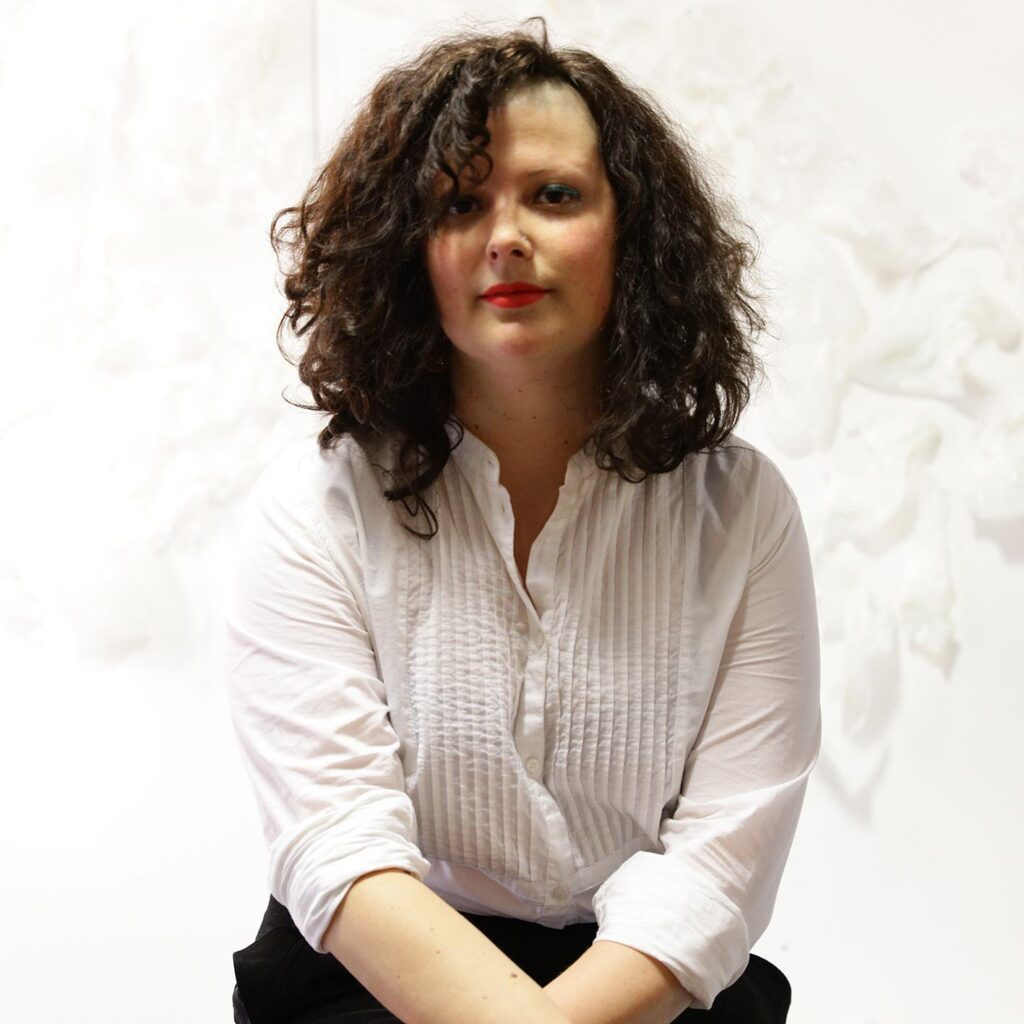Residências Artísticas: a água como fonte de comunidade 2022
Catalogue

Within the scope of “Residências Artísticas: a água como fonte de comunidade” program, promoted and organized by RAMA – Art Residencies of Maceira e Alfeiria, with the support of Torres Vedras' Municipal Council, an exhibition is proposed in two stages: the first, in the context of the landscape surrounding RAMA's studio and the second inside the studio itself, with a documentary presentation of the work developed by the artistic creation grantees, Beatriz Neves Fernandes, Catarina Gentil and Inês Ferreira-Norman, in close collaboration with Ana Luísa Ribeiro, who was associated to this experimental project.
The artworks developed for this exhibition are spaces of intersections of creation and investigation that derive from different experiences. As diverse as its references that move among the geography of the place, the memories it summons, the daily routines, readings, intuitions, desires, and an experimental will, perhaps close to a speculative action between the visible and what is apparently visual, without forgetting the poesis that all artistic making collects and gives back to us. In this respect, it is rescued from the vernacular, profane imagery or in dialogue with the epiphanies that only readings of the mythological spectrum can reify, make present.
“Trabalho de campo: das possibilidades do que é visível” it is an approximation to the echoes that the theme of this residency can summon, and it is simultaneously so distant and so close to readings about this germinal fluid that is one of the strongest images of what is transitory, but always present, like life.
João Silvério

Beatriz Neves Fernandes
The body of work developed, in the context of the residence at RAMA, proposes an essay of the spirit's effectuation on the plastic matter, which results from the relevance and unfolding of the mystical and paradoxical instant plans in the moment of the creative process, in confluence with the day-to-day pragmatism. All ancient civilisations would have their sacred place adjacent to a fountain or spring, where devotion is connected with the essential or practical needs of the waters of the source.This phenomenon is still present today in sanctuaries such as that of Our Lady of Miracles, located near the RAMA studios, and is exalted, in this essay, with recourse to the symbol of the well, as a place of gathering and simultaneously contemplation of something that emerges from the fertile and watery depths of the earth. The suspended silicone, supports the creation of diffuse environments, interrupting the direct observation of drawings referring to hypotheses of taming it. The countless formal possibilities suggest the notion of unfolding and multiplication of the consciousness of the same spectral and ambiguous plane, as several vortexes, containing in themselves infinite informal and hypothetical realms, which, in their volatile qualities, contribute to mimic the understanding of the paradoxical instant.

Catarina Gentil
"All my work done at RAMA starts from the intrinsic relationship between three components: Water; Territory and People. My pieces develop from inspirations that arise from a careful observation of the daily life of the village, the morphology and topography of the region, the attention and the search and exaltation of the vernacular. To think and rethink the role of water as a network, as life, as memory, and of its symbiotic relationship with people. This fieldwork is materialized in the use of materials and objects inspired by or found in the territory and its villages, from bowls and crockery, to sheets, clay and, obviously, water. It is extremely important to me to maintain the honesty of the materials and my inspirations, and with these works, to praise a way of life that shows so much value."

Inês Ferreira-Norman
The artwork started and presented at RAMA is based on some of the concepts that scientist and theorist Donna Haraway proposes in one of her treaties, 'Making Kin', where she argues for a society free of discrimination by means of creating bonds with all species. The work unravels and cascades the micro and macro worlds that were found in the water and soil from various wells, public fountains and ponds in Maceira. Water transport was also very present from the start, from the independent grid coming from a well nearby the Sanctuary of Our Lady of the Miracles, to the aqueduct in Torres Vedras. These mechanisms are borders: while they bring us closer to the water itself, they also separate us from its source. This distancing is the opposite of making kin.

Ana Luísa Ribeiro
Ana Luísa Ribeiro's work has been developed essentially in the field of Painting. Her works, often composed of sets of canvases, have as a leit-motiv questions related to the "collective memory" and how the observer, with her/his individual experience and memory, reads and apprehends the images. The works are composed of fragments, either of written language (words, phrases) or of "iconic" elements of painting itself (like dripings or elements of landscapes). In recent work, the artist has also developed installation works, in forests and green areas, that intend to approach questions related to "Cultural Landscape", Ecology and Art History. These works are composed of blank canvases installed on trees or arranged between trees and vegetation, on the ground (for example in clearings) transmuting the exhibition space to the outside, creating outdoor "Salons" or "Chambres-de-Merveilles", altering the places with "paintings" whose compositions are drawn with the shadows of the natural elements existing in these places, producing a displacement of the perception of the elements of nature and awareness about their presence or absence.












































































